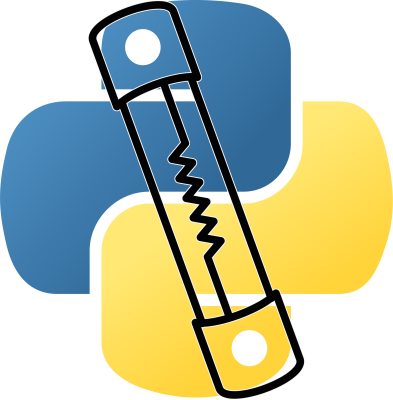Started a guide to writing FUSE filesystems in Python
As DebConf22 was coming to an end, in Kosovo, talking with Eeveelweezel they invited me to prepare a talk to give for the Chicago Python User Group. I replied that I’m not really that much of a Python guy… But would think about a topic. Two years passed. I meet Eeveelweezel again for DebConf24 in Busan, South Korea. And the topic came up again. I had thought of some ideas, but none really pleased me. Again, I do write some Python when needed, and I teach using Python, as it’s the language I find my students can best cope with. But delivering a talk to ChiPy?
On the other hand, I have long used a very simplistic and limited filesystem I’ve designed as an implementation project at class: FIUnamFS (for “Facultad de Ingeniería, Universidad Nacional Autónoma de México”: the Engineering Faculty for Mexico’s National University, where I teach. Sorry, the link is in Spanish — but you will find several implementations of it from the students 😉). It is a toy filesystem, with as many bad characteristics you can think of, but easy to specify and implement. It is based on contiguous file allocation, has no support for sub-directories, and is often limited to the size of a 1.44MB floppy disk.
As I give this filesystem as a project to my students (and not as a mere homework), I always ask them to try and provide a good, polished, professional interface, not just the simplistic menu I often get. And I tell them the best possible interface would be if they provide support for FIUnamFS transparently, usable by the user without thinking too much about it. With high probability, that would mean: Use FUSE.
But, in the six semesters I’ve used this project (with 30-40 students per semester group), only one student has bitten the bullet and presented a FUSE implementation.
Maybe this is because it’s not easy to understand how to build a FUSE-based
filesystem from a high-level language such as Python? Yes, I’ve seen several
implementation examples and even nice web pages (i.e. the examples shipped with
thepython-fuse
module Stavros’
passthrough filesystem,
Dave Filesystem based upon, and further explaining,
Stavros’,
and several others) explaining how to provide basic functionality. I found a
particularly useful presentation by Matteo
Bertozzi presented
~15 years ago at PyCon4… But none of those is IMO followable enough by
itself. Also, most of them are very old (maybe the world is telling me
something that I refuse to understand?).
And of course, there isn’t a single interface to work from. In Python only, we can find python-fuse, Pyfuse, Fusepy… Where to start from?
…So I setup to try and help.
Over the past couple of weeks, I have been slowly working on my own version, and presenting it as a progressive set of tasks, adding filesystem calls, and being careful to thoroughly document what I write (but… maybe my documentation ends up obfuscating the intent? I hope not — and, read on, I’ve provided some remediation).
I registered a GitLab project for a hand-holding guide to writing FUSE-based filesystems in Python. This is a project where I present several working FUSE filesystem implementations, some of them RAM-based, some passthrough-based, and I intend to add to this also filesystems backed on pseudo-block-devices (for implementations such as my FIUnamFS).
So far, I have added five stepwise pieces, starting from the barest possible
empty
filesystem,
and adding system calls (and functionality) until (so far) either a read-write
filesystem in RAM with basicstat()
support
or a read-only passthrough
filesystem.
I think providing fun or useful examples is also a good way to get students to use what I’m teaching, so I’ve added some ideas I’ve had: DNS Filesystem, on-the-fly markdown compiling filesystem, unzip filesystem and uncomment filesystem.
They all provide something that could be seen as useful, in a way that’s easy to
teach, in just some tens of lines. And, in case my comments/documentation are
too long to read, uncommentfs will happily strip all comments and whitespace
automatically! 😉
So… I will be delivering my talk tomorrow (2024.10.10, 18:30 GMT-6) at ChiPy (virtually). I am also presenting this talk virtually at Jornadas Regionales de Software Libre in Santa Fe, Argentina, next week (virtually as well). And also in November, in person, at nerdear.la, that will be held in Mexico City for the first time.
Of course, I will also share this project with my students in the next couple of weeks… And hope it manages to lure them into implementing FUSE in Python. At some point, I shall report!
Update: After delivering my ChiPy talk, I have uploaded it to YouTube: A hand-holding guide to writing FUSE-based filesystems in Python, and after presenting at Jornadas Regionales, I present you the video in Spanish here: Aprendiendo y enseñando a escribir sistemas de archivo en espacio de usuario con FUSE y Python.
